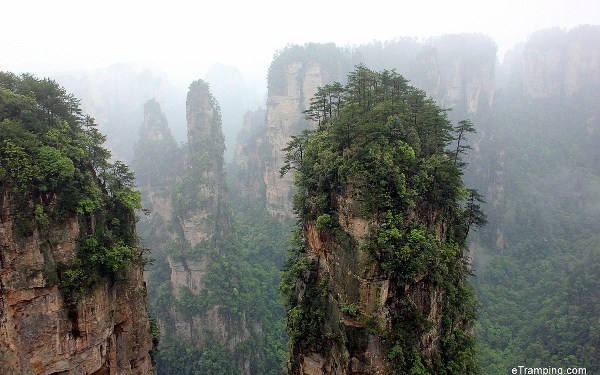
Is Zhangjiajie a World Heritage Site?
Yes, Zhangjiajie is home to a renowned World Heritage Site. While the city itself doesn't hold the title, it contains the Zhangjiajie National Forest Park, a significant part of the Wulingyuan Scenic Area. It was the Wulingyuan Scenic Area that received the prestigious designation of a UNESCO World Heritage Site in 1992.
Delving into the Details:
Let's break down the key areas:
1. Zhangjiajie City vs. Wulingyuan Scenic Area:
- Zhangjiajie City: A prefecture-level city in the north of Hunan Province, China. It serves as a gateway to the renowned scenic areas nearby.
- Wulingyuan Scenic Area: A sprawling area encompassing several national parks and reserves, covering over 26,000 hectares. It's known for its quartzite sandstone pillars, deep ravines, lush forests, and diverse wildlife.
2. Zhangjiajie National Forest Park:
- This park is one of the four core scenic areas within the broader Wulingyuan Scenic Area.
- It gained fame as the inspiration for the "Hallelujah Mountains" in the movie Avatar.
- Key features include:
- Quartzite Sandstone Pillars: Thousands of towering sandstone formations, some reaching over 1,000 meters in height.
- The Bailong Elevator: The world's tallest outdoor elevator, built onto the side of a massive cliff.
- Golden Whip Stream: A serene stream meandering through the park's valleys.
3. UNESCO World Heritage Site Criteria:
The Wulingyuan Scenic Area, including Zhangjiajie National Forest Park, was inscribed on the UNESCO World Heritage List based on four criteria:
| Criteria | Description |
|---|---|
| **(vii) Superlative natural phenomena or areas of exceptional natural beauty and aesthetic importance** | The towering sandstone pillars, often shrouded in mist, create a landscape of surreal and exceptional beauty. |
| **(viii) Outstanding examples representing major stages of earth's history, including the record of life, significant on-going geological processes in the development of landforms, or significant geomorphic or physiographic features.** | The quartzite sandstone formations are a remarkable example of geological processes over millions of years. |
| **(ix) Outstanding examples representing significant on-going ecological and biological processes in the evolution and development of terrestrial, fresh water, coastal and marine ecosystems and communities of plants and animals.** | The area is home to a diverse range of plant and animal life, including many endemic and endangered species. |
| **(x) Areas of significant diversity containing the most important and significant natural habitats for in-situ conservation of biological diversity, including those containing threatened species of outstanding universal value from the point of view of science or conservation.** | Wulingyuan serves as a critical habitat for numerous rare and threatened species, contributing to global biodiversity conservation efforts. |
In Conclusion:
While Zhangjiajie City itself is not a World Heritage Site, it houses the renowned Zhangjiajie National Forest Park, a crucial part of the UNESCO-listed Wulingyuan Scenic Area. This designation underscores the region's exceptional natural beauty, geological significance, and ecological importance on a global scale.
FAQs:
1. What is the best time to visit Zhangjiajie National Forest Park?
Spring (April-May) and autumn (September-October) offer pleasant weather with comfortable temperatures and fewer crowds compared to peak season.
2. How do I get to Zhangjiajie?
Zhangjiajie Hehua International Airport (Wulingyuan Airport) connects the city to major destinations in China. You can also reach Zhangjiajie by high-speed train.
3. Are there accommodations available within Zhangjiajie National Forest Park?
Yes, there are hotels and guesthouses within the park. However, staying in nearby towns like Wulingyuan or Zhangjiajie City offers a wider range of options.